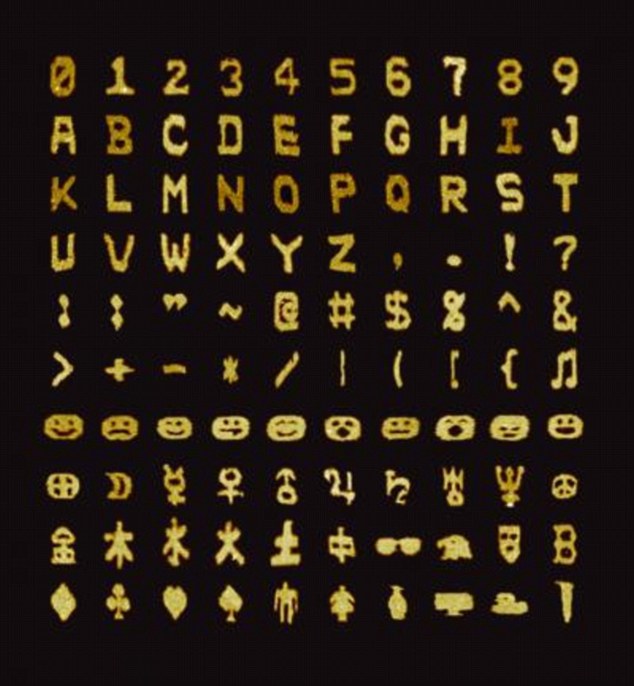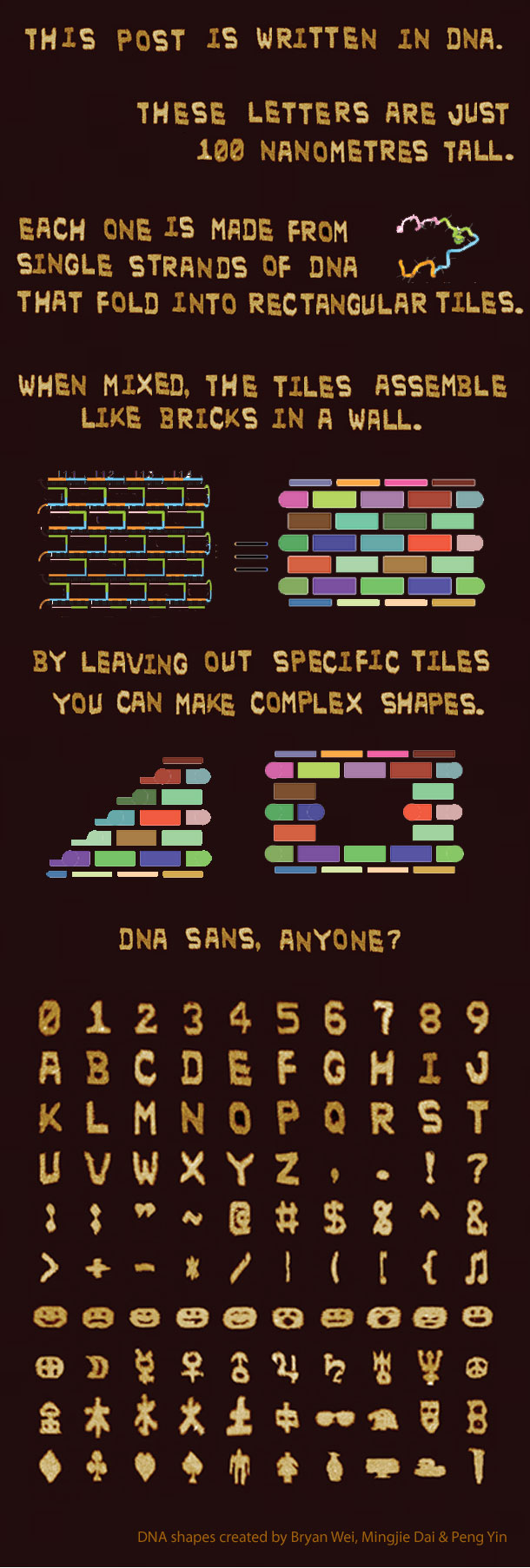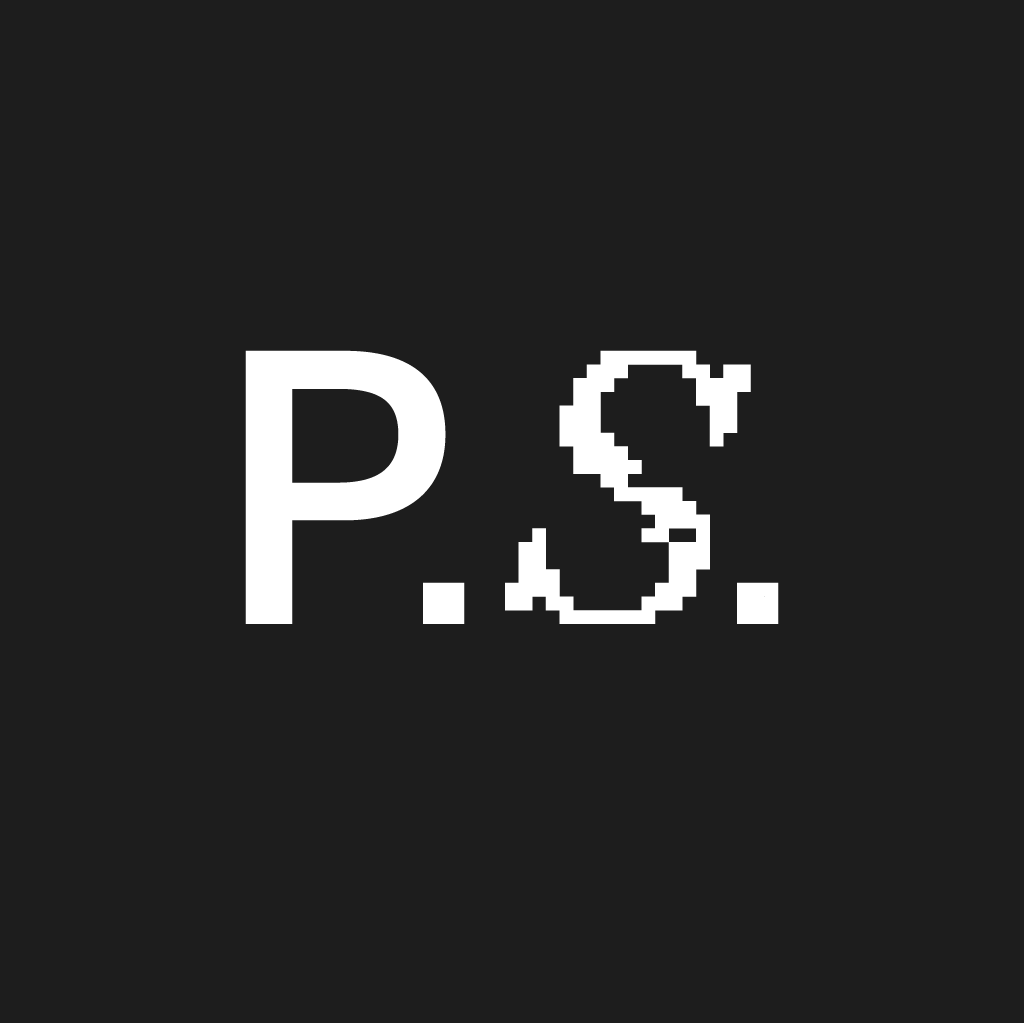DNA Origami
Researchers have created an entire font from DNA particles, each character 100 nanometers in size.


Future typographers take note – if you're not into DNA origami now then you're behind the curve. It turns out DNA isn't limited to being the mere building blocks of life. The proteins which comprise DNA can also be used as component materials within nanotechnology. Which is exactly what the Wyss Institute have demonstrated, by creating an entire font from DNA particles, each character 100 nanometers (billionths of a meter) in size...
Pen Ying's method of making DNA nanostructures is closer to Lego than traditional Origami. They have engineered Single Stranded Tiles (SSTs) from synthetic DNA. The tiles will only interlock with one another if they have a complementary sequence of DNA to link to (see the above video for a handy and illuminating explanation). The possible combinations of interlocking tiles allows a certain range of edges and shapes to form, which Ying’s team combined into recognisable alphanumeric characters.
The researchers look to have had a lot of fun with their method, recreating the alphabet (Western AND Chinese) and going the extra distance to render DNA emoticons. But from the point of view of nanoengineering, the method of construction is significant. Other forms of DNA origami use one long strand of viral DNA, folded into the requisite shape. There is always a risk that nanomaterials made from viral material would be attacked by human immune systems. This is not a risk for the SSTs. Though DNA nanotechnology is a speculative field of research for now, this DNA lego could one day be a contender for biocompatible nanomedicine machines.




Discussion